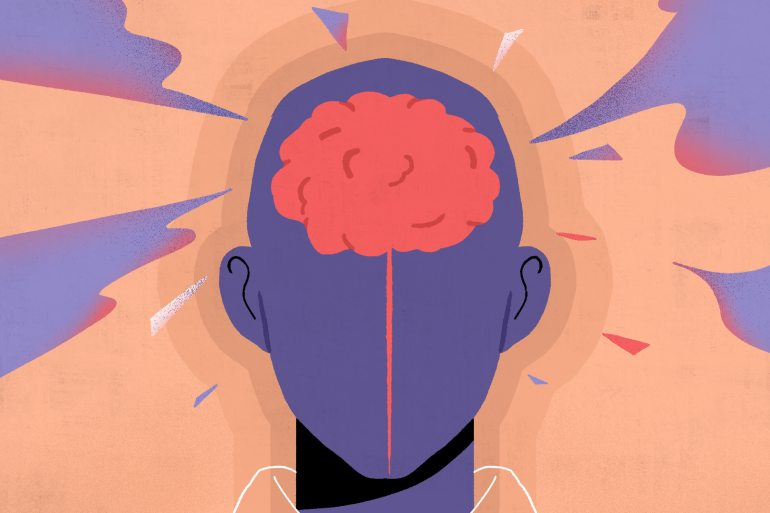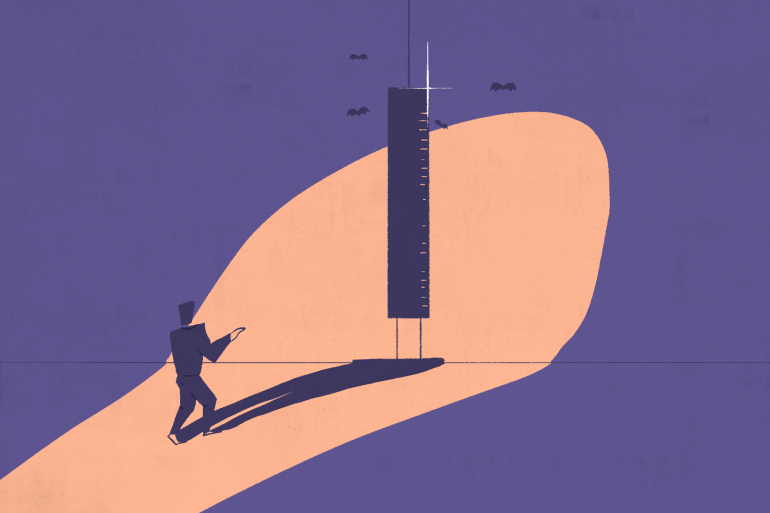How dangerous is India’s ‘double mutant’ COVID-19 variant?
Dr Khan examines what we know so far about the new variant. Plus, the new research on the safety of vaccines for pregnant and breastfeeding mothers.

It is beginning to feel as though not a week can go by without scientists identifying a new variant of the coronavirus. Each time a new strain is announced, I feel myself becoming increasingly numb to the shock factor that the headline is supposed to trigger.
I have written extensively about variants originating in the United Kingdom, Brazil, South Africa and New York; this week, it is the turn of India.
Keep reading
list of 4 itemsCOVID situation in India going from bad to worse: Health official
Pfizer says its COVID vaccine 100% effective in adolescents
What do the new COVID-19 variants mean? | Start Here
In late March, India’s National Centre for Disease Control (NCDC), a division of the Ministry of Health and Family Welfare, announced that a new variant – dubbed a “double mutant” – had been identified in samples of saliva taken from people in Maharashtra, Delhi and Punjab. This comes on the back of a month that has seen a surge in cases of COVID-19 across India, with many states re-imposing curfews, restrictions and lockdown measures.
The Ministry of Health and Family Welfare says this new “double mutant” variant has not been found in sufficient numbers to account for the increase in COVID-19 cases across the country. That, rather, is thought to be due to large public gatherings such as weddings, the opening of cinema halls and gyms, as well as large political rallies in West Bengal where elections are due to be held soon.
Nevertheless, it is a “variant of concern” (VOC) and is being closely monitored. The genome sequencing carried out by a consortium of 10 labs in India, called the Indian SARS-CoV-2 Consortium on Genomics (INSACOG), has identified two important mutations in the new variant, giving it the unfortunate title of “double mutant”.
First, the E484Q mutation, which is similar to the E484K mutation identified on the Brazilian and South African variants, can change parts of the coronavirus spike protein. The spike protein forms part of the coronavirus outer layer and is what the virus uses to make contact with human cells, bind to them, then enter and infect them.
The vaccines have been designed to create antibodies which target the spike protein of the virus specifically. The worry is that if a mutation changes the shape of the spike protein significantly then the antibodies may not be able to recognise and neutralise the virus effectively. Scientists are investigating whether this may be the case for the E484Q mutation.
The second is the L452R mutation, which has also been found in a variant thought to be responsible for outbreaks in California. Scientists believe this mutation increases the spike protein’s ability to bind to human host cells, thereby increasing its infectivity. The study also suggests this mutation may aid the virus in evading the neutralising antibodies that both the vaccine and previous infection can produce, though this is still being investigated.
The combination of these two mutations would indeed make the variant a concern if it was to become the dominant variant across India.
Right now, however, all eyes are on the UK B117 variant, which possesses the N501Y mutation making it up to 60 percent more infective, and which has been found extensively in India as well. It has been identified in 125 countries worldwide and is now the dominant variant in the UK.
The NCDC said 81 percent of 401 samples sent for genome sequencing from Punjab were found to have the UK variant and there is real concern among scientists that this variant may not only become the dominant variant in India, but may be contributing to the increasing number of infections.
They are urging the Indian authorities to scale up genome sequencing to quickly identify new variants that can potentially be more dangerous, and then isolate individuals who are known to be infected as well as their close contacts. Although the situation in India’s hospitals is much better now, memories of the intensity of the first wave loom large among healthcare workers. The country is at an important point in the pandemic – one that will require decisive action by the government and a willingness by the Indian population to prevent a national surge in new cases.
While it is important that we keep analysing the virus for new mutations, especially those that may allow it to evade the vaccines, it is also important to know that mutations are common during viral replication and new variants are to be expected.
It is also good to know that the companies which make the vaccines will be able to “tweak” their vaccines to adjust for new variants, a process that will take a relatively short amount of time.
In fact, the UK has already announced potential booster shots for the autumn using vaccines that have been tweaked to be more effective against new variants, and this is likely to happen worldwide. We do it for the flu vaccine every year; it may become customary to do the same for the COVID-19 vaccine.
Progress Report: Pregnant and breastfeeding mothers can pass vaccine antibodies to babies
Pregnant and lactating women were not included as a group in the trials for any of the vaccines (although some women became pregnant after the trials commenced). However, since vaccination programmes have begun, scientists have been able to determine that the vaccines are most likely safe for both pregnant and lactating women. The general advice to pregnant women is to take up the vaccine, especially if they work in a role that is public-facing or have an underlying health condition that puts them at risk of developing complications should they contract the coronavirus.
There has been some debate about how a pregnant woman’s body might respond to having the vaccine at a time when their immune systems may be suppressed to stop it “rejecting” the baby.
A study by Harvard University, published in the American Journal of Obstetrics and Gynaecology, examined responses to vaccines in 131 women (84 pregnant, 31 lactating and 16 non-pregnant). They were given the full two doses of either the Pfizer or Moderna COVID-19 vaccines and antibody levels were checked in maternal blood and breast milk before the study, at the time of the second dose and then again two to six weeks after the second dose.
In those women who were pregnant, baby umbilical cord blood was also tested after delivery for the presence of maternal antibodies triggered by the vaccine. The study also compared these antibody levels with a group of women who had previously been infected by COVID-19.
The results showed that women – whether they were pregnant, breastfeeding or neither – had similar levels of antibodies after the two vaccine doses.
Vaccine-generated antibodies were present in all umbilical cord blood and breast milk samples. The second dose increased specific antibodies, called immunoglobulin G (IgG). These form the basis of long-term protection against the virus; they are retained and reproduce rapidly when exposed to the real virus, neutralising it before it has a chance to take hold and cause a full-blown infection. Importantly, side effects from the vaccines were rare and equally reported in all three groups of women.
When vaccine-induced antibody levels were compared with those of women who had antibodies because of a previous infection of COVID-19, they were found to be higher. This means the vaccines are more likely to provide more robust and longer-lasting protection against coronavirus in the future compared with any protection gained through a previous infection.
The study does provide some reassurance to women who are pregnant or breastfeeding and worried about getting the vaccine. The sample size is relatively small and more research will be needed to back this study up, but it adds to the growing data proving the safety of the vaccines.
In the Doctor’s Surgery: The mental health toll of the pandemic on healthcare workers
March 23 marked a year since the first lockdown measures were introduced in the UK, where I work as a family doctor.
To mark this poignant anniversary, I was asked to appear on a television show to talk about my experiences as a doctor in the pandemic. I explained how part of my job had been managing patients with COVID-19 in the community, seeing them in clinics and visiting them in care homes. I talked about some of the difficult conversations I had had with relatives when their loved ones were dying from COVID-19 and treatment options were limited. It was something I was used to talking about, having been asked similar questions throughout the last 12 months.
The host of the television show then asked me how I was feeling. It took me a moment to actually reflect on the past year – talking about the pandemic feels almost robotic now. I knew what I had been through, I knew how to describe it but I had not sat down with my own thoughts and tried to process what I had actually been through.

I was honest with the host; I told her I was tired and, although the vaccinations were bringing hope to many, my main concern now was catching up on all the non-COVID-19-related illnesses that had been forced to wait while we focussed on those dying from coronavirus.
After coming off air, I thought about all the healthcare workers across the world who were probably feeling the same as me. I had not really had the time to think about the range of emotions I have experienced since the pandemic began – each day was busier than the last.
At the height of the pandemic, it was all-hands-on-deck and, then, the rollout of the vaccine meant working on days off and evenings to keep on top of the numbers. It was not until that moment, when I was asked how I was feeling, that I allowed myself the luxury of a moment of reflection.
When populations eventually emerge out of lockdown, healthcare workers are going to be faced with another type of pandemic: one that may be just as difficult to treat as the coronavirus pandemic has been so far.
Millions of people have missed out on vital surgery and treatment because of the pandemic, and there will also be a wave of mental health-related issues associated with the prolonged periods of lockdowns many countries have seen and livelihoods that have been lost.
When I think about jumping from one crisis to the next, I do get pangs of anxiety. As healthcare workers, some would say we have had to endure the worst of the pandemic: going into high-risk environments where the danger of contracting a deadly disease has been very real; taking care of sick patients who were dying at higher frequencies than any of us had ever come across before; and also the emotional toll that explaining this to their loved ones takes on us.
Some may say that we ought to be used to such things by now, but we are not. None of us was trained for the intensity of emotions that have come with this pandemic and we are all human.
My hope is that healthcare workers will get the support they need as case numbers come down and the pandemic loosens its grip on the world. But, I am a realist, and experience has taught me that appropriate mental health support for healthcare workers is often just lip service paid by governments who are keen to please the masses.
It is far more likely that the expectation on healthcare workers will be to immediately start work on the backlog of patients with non-COVID-related illnesses who are desperate for the care they deserve, even if it comes at the expense of our mental health.
And Now, Some Good News: Testing a new nasal spray vaccine
Right now, the only way to get yourself vaccinated against the coronavirus is via an intramuscular injection that involves a needle.
But for those who hate needles, there may be some good news on the horizon. The team behind the Oxford-AstraZeneca vaccine are trialling a nasal spray version of the vaccine. A nasal vaccine is not a new concept and many countries inoculate children against flu this way.
The team is currently recruiting 30 healthy volunteers aged 18 to 40 for a trial that aims to investigate the level of immune system responses generated by the vaccine using this delivery technique, as well as monitoring safety and for any adverse reactions. If shown to be safe and effective, larger trials are likely to follow and this may eventually lead to the availability of a COVID-19 vaccine that can be administered without the need for a needle.

Reader’s Question: Is the Oxford-AstraZeneca vaccine really safe?
On March 29, Canada’s National Advisory Committee on Immunisations recommended that the Oxford-AstraZeneca vaccine should not be used in adults aged 55 and over while it investigates possible links between the vaccine and rare blood clots.
This comes after the European Medicines Agency cleared the vaccine as safe and said on March 18 it had found no evidence of a link.
However, Canadian health officials have said they will continue to advise people older than 55 to get the Oxford-AstraZeneca vaccine if offered, as they are at a higher risk of severe disease from COVID-19.
Most countries worldwide resumed the use of the vaccine after the European Medicines Agency and the World Health Organisation said it was safe and effective. It is likely that Canada will reach the same conclusion, with Dr Supriya Sharma, chief medical adviser at the Canadian health department, suggesting this was only a “precautionary approach and we’ll move forward as we get more information”.
The advice for now in the vast majority of countries is to take up the Oxford-AstraZeneca vaccine if this is the one offered to you, as its benefits outweigh the risks.